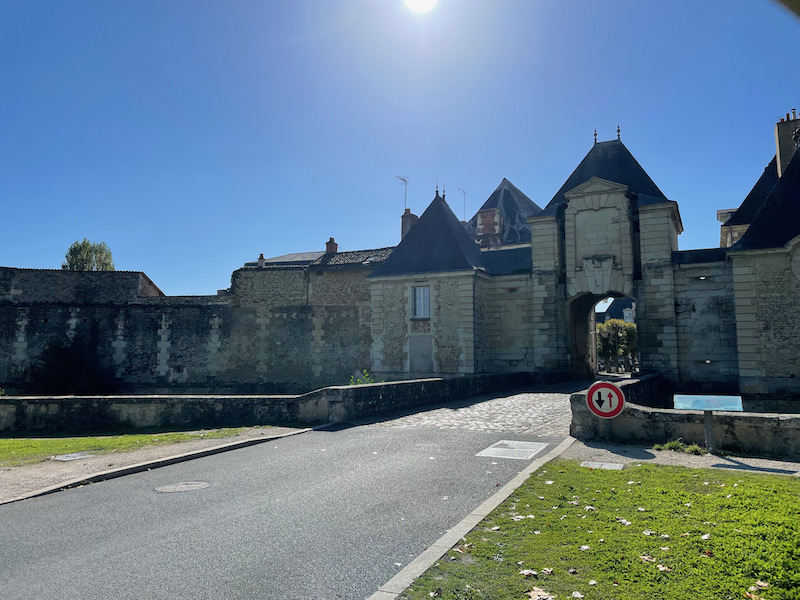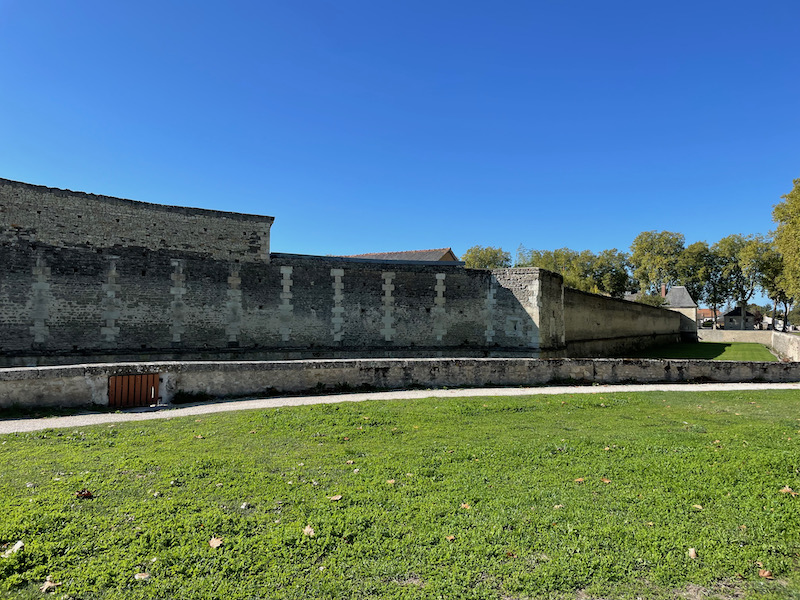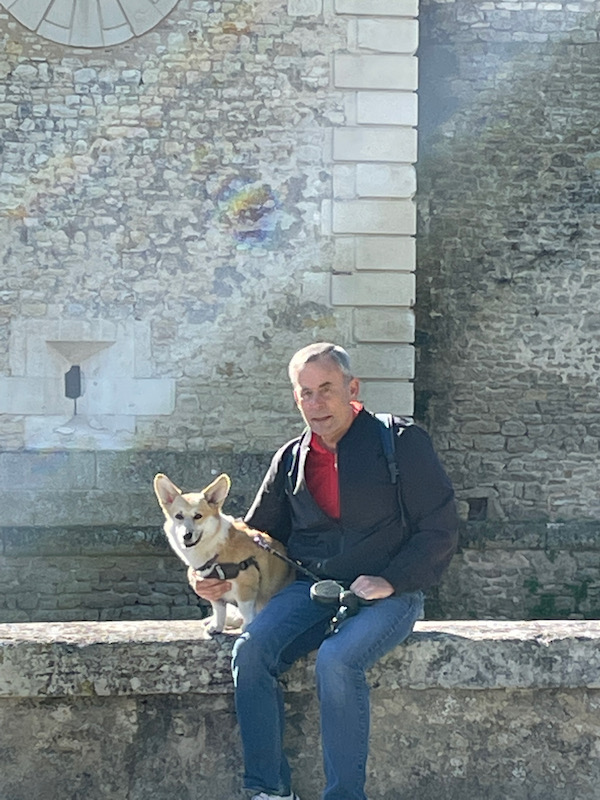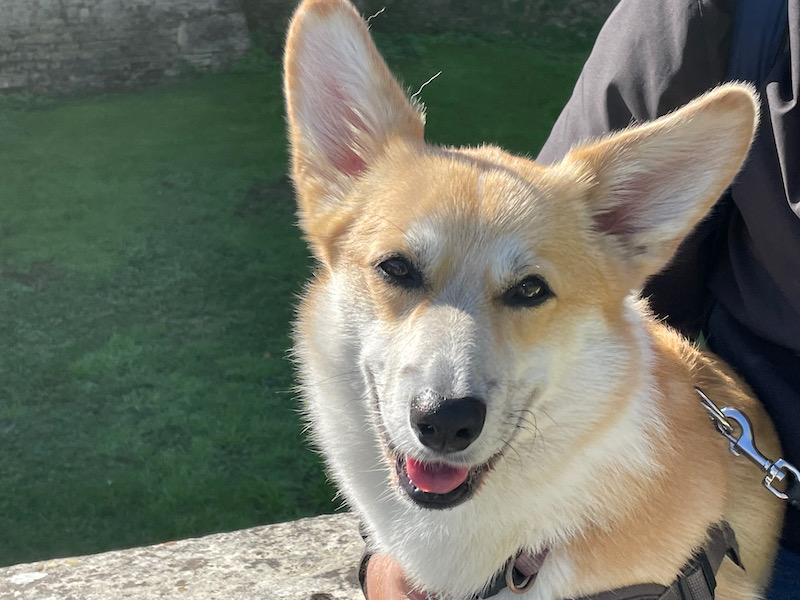Our Blog - Loire Valley Trip - Richelieu, France
Most people have heard of Cardinal Richelieu from History classes, who was named a Bishop in 1607, then a Foreign Secretary, then finally Cardinal in 1622. He was a chief minister to King Louis XIII from 1624 until his death in 1642. His actual name was Armand du Plessis de Richelieu, with the family name "Plessis de Richelieu" dating back to the 14th century. As his power under Louis XIII increased, he obtained authorization to build "a town enclosed by walls and ditches and to build a hall". With the help of an architect, an "ideal city" was built starting in 1631 until the Cardinals death in 1642. It was laid out in a grid pattern in the shape of a rectangle. There are 3 gates although a 4th "fake" gate was installed to keep things symmetrical.
A piece of trivia ... Richelieu is also known for being the inventor of the table knife. Annoyed by the bad manners that were commonly displayed at the dining table by users of sharp knives (who would often use them to pick their teeth), he ordered all of the knives on his dining table to have their blades dulled and their tips rounded. The design quickly became popular throughout France and later spread to other countries.
The plan of the town revolves around two symmetrical squares: the Place Royale (now called Place des Religieuses) and the Place du Cardinal (now called Place du Marché). We started at Place du Marché, which ended up being the nicer of the two squares. And we also found out that this is basically where all the commerce is as well :-0
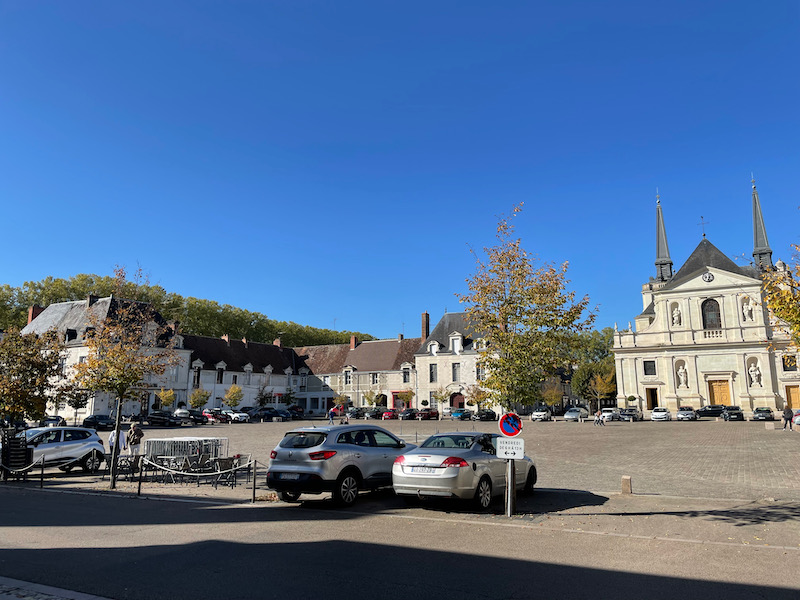
On the square is the Church of Notre-Dame, a large church built between 1633 and 1639 in a classical style. On the façade are 4 statues of the evangelists that were done in 1761. The year prior to the completion, the builder, Pierre Lemercier, died when he fell from a scaffolding.
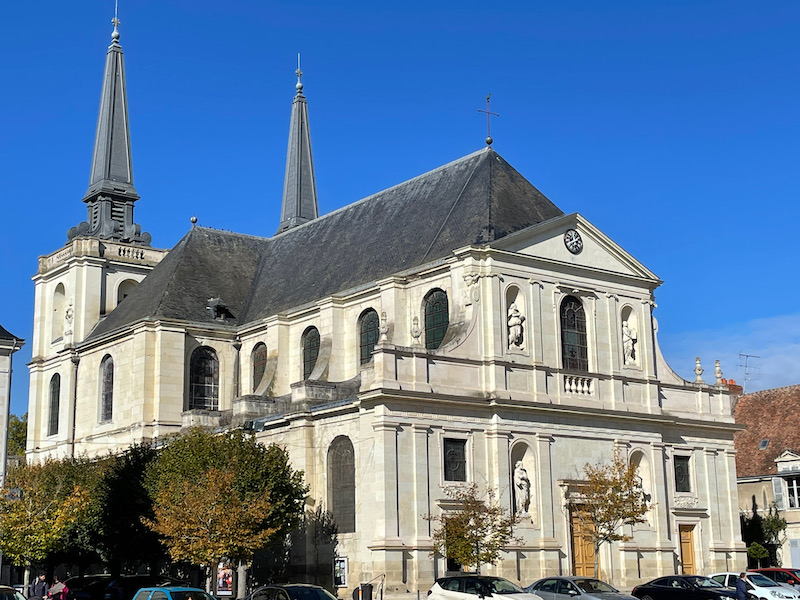
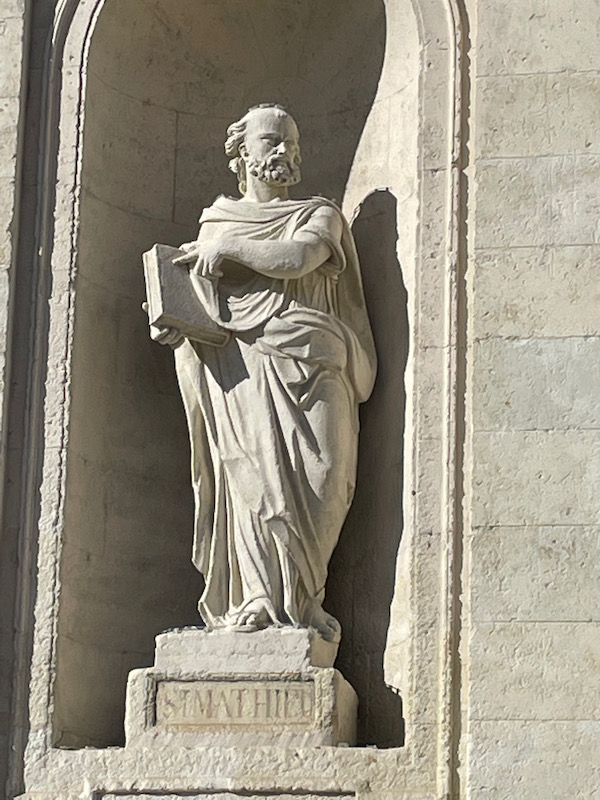
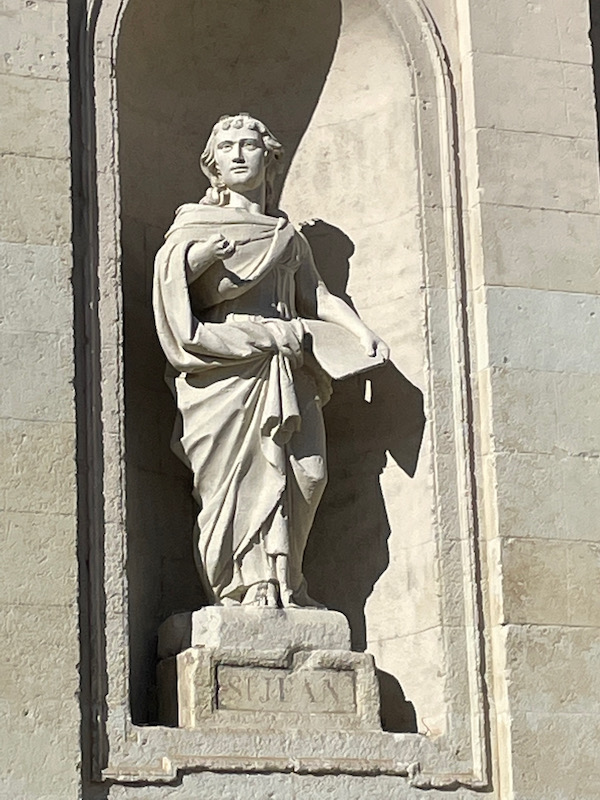
The interior has the nave and 2 side aisles, with Romanesque arches. Around the nave, just above the arches, is a frieze that contains coats of arms as well as other shapes.
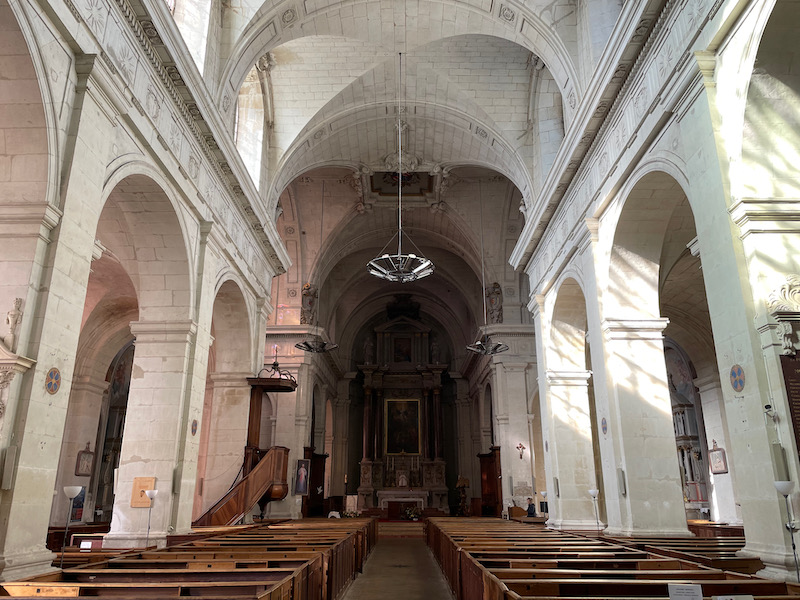
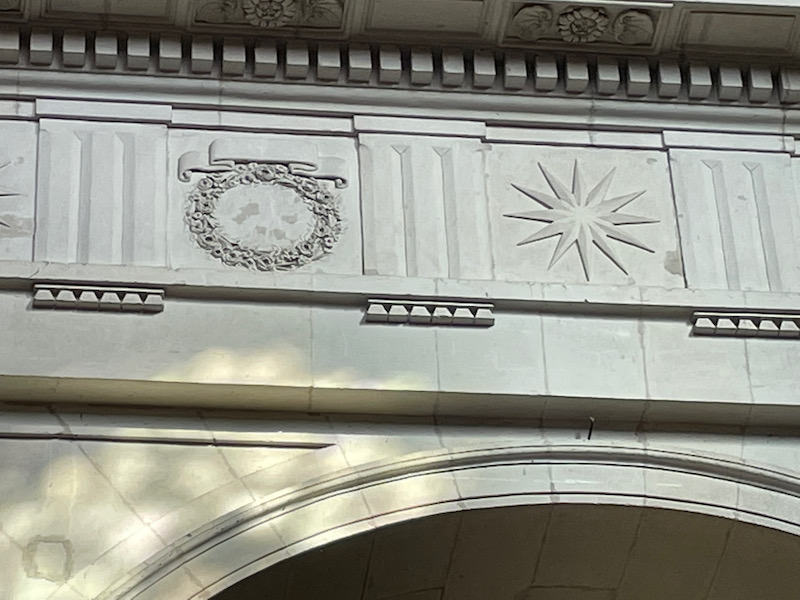
Here is the main altar, made from white marble with 4 Corinthian columns in red marble. Then one of the side altars, with 19th century paintings, one large one over the altar (I don't know what this one is called), and then one on the side showing the Adoration of the Magi.
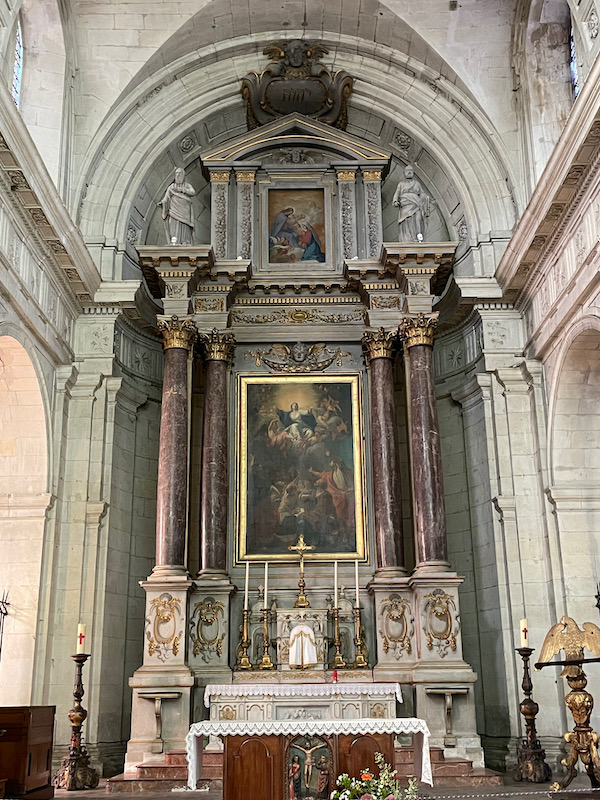
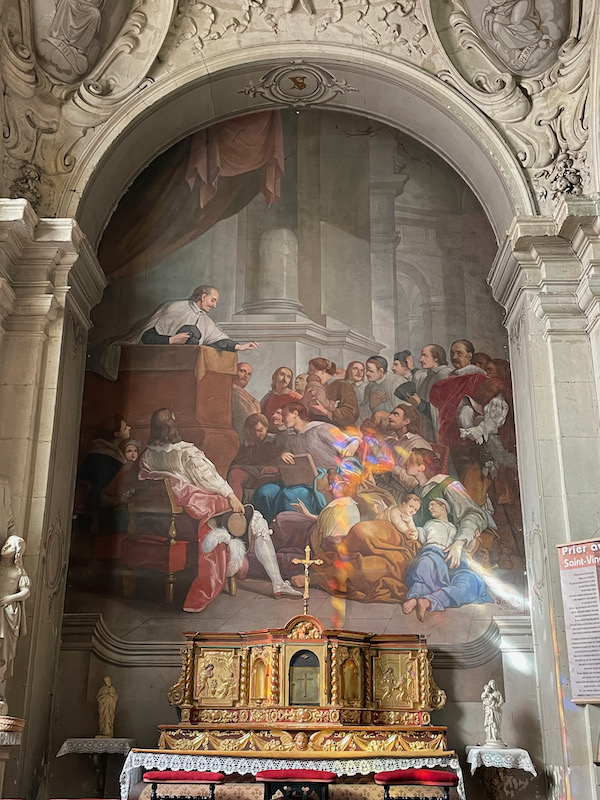
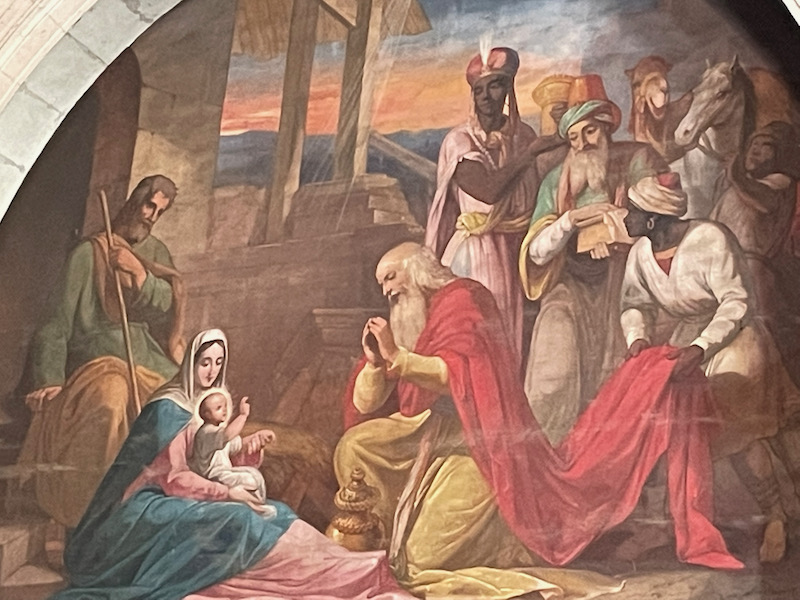
The stained glass windows were done in 1880 after the original windows were destroyed during the French Revolution. This first one shows Jeanne de Chantal, who founded the Order of the Visitation. Then the second shows the Resurrection of Christ.
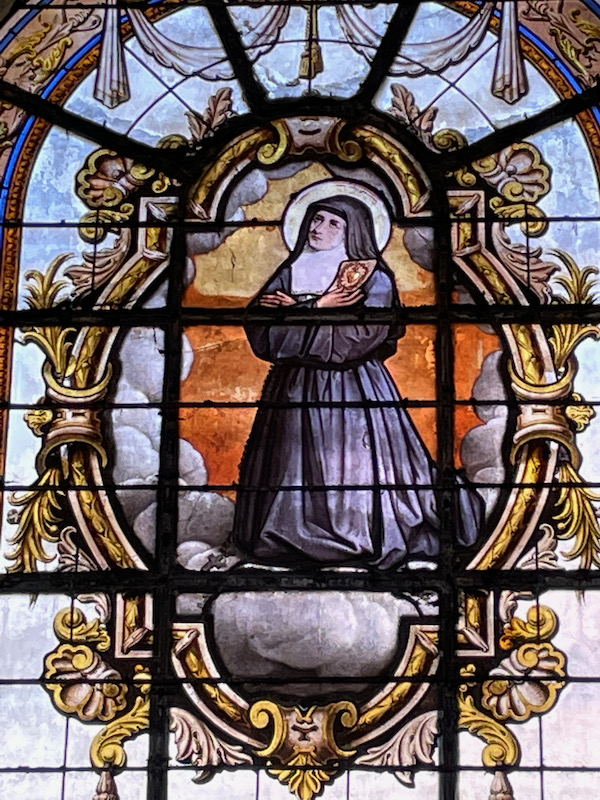
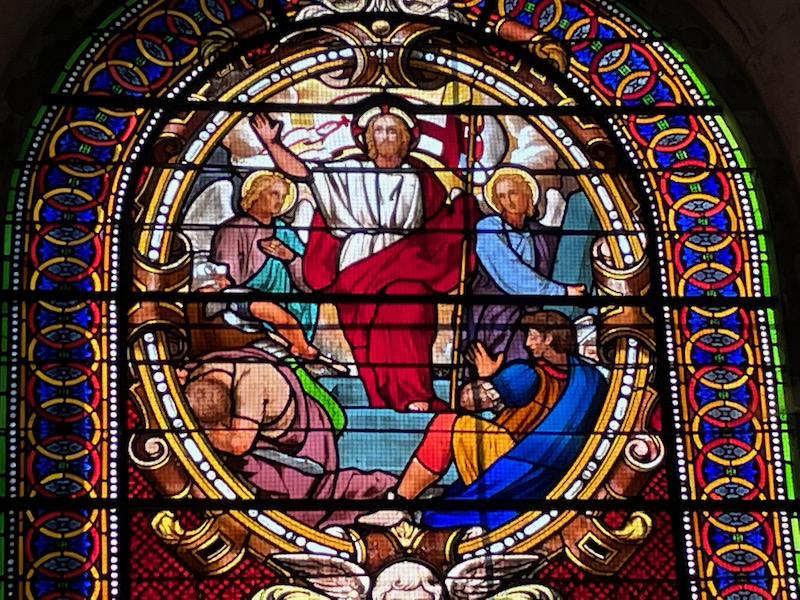
The covered market halls date back to the origins of the town in the 17th century. You can see the nice wooden framework. It was a bit odd though, most halls are in the middle of the square and open on all 4 sides, but this one is built between two buildings, so only open front-and-back.

The Grand Rue runs between the two squares and the houses on either side were reserved for nobles and friends of the Cardinal. He gave them the land for free but there was a specific style and specifications for the exterior, so that the houses look harmonious. There are plaques on most of them and they seem to all have been constructed around 1633 and all by the same builder. Some of them retain the coat of arms of their original owner. This is what almost all of the houses look like although this one was in the best shape. You can see the arched doorway and symmetrical windows. Then on the top floor, 5 dormer windows with the middle one being larger than the ones on the sides. This one is missing the coat of arms.
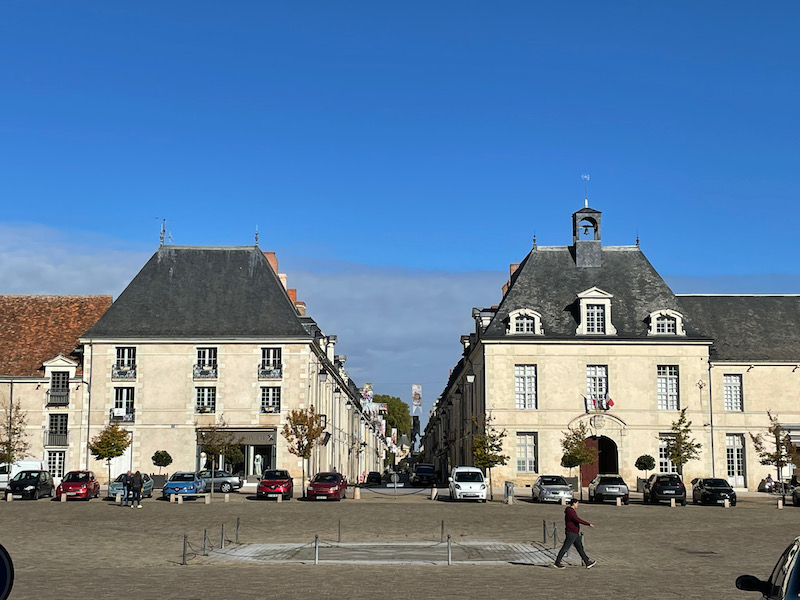
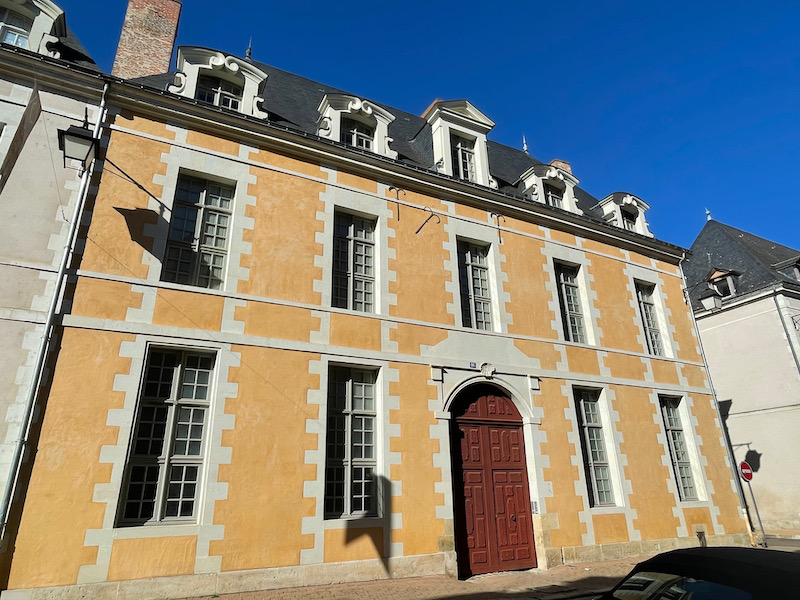
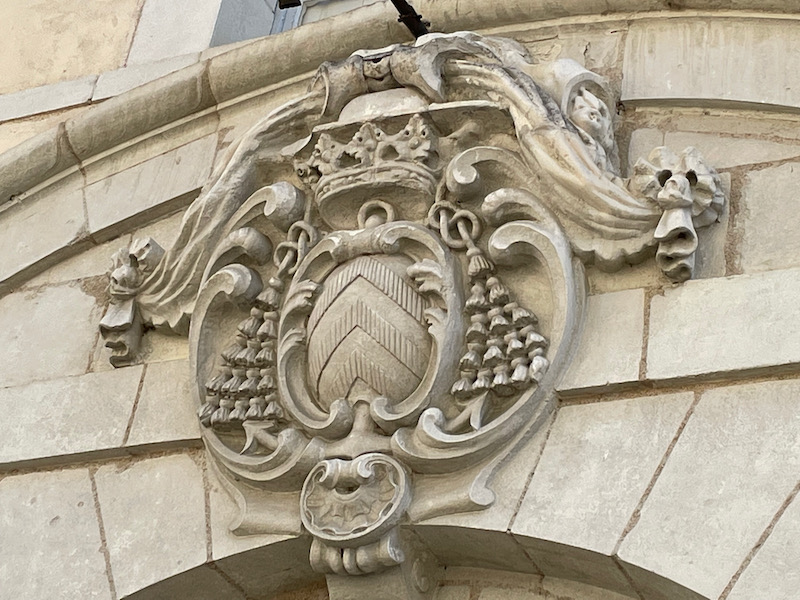
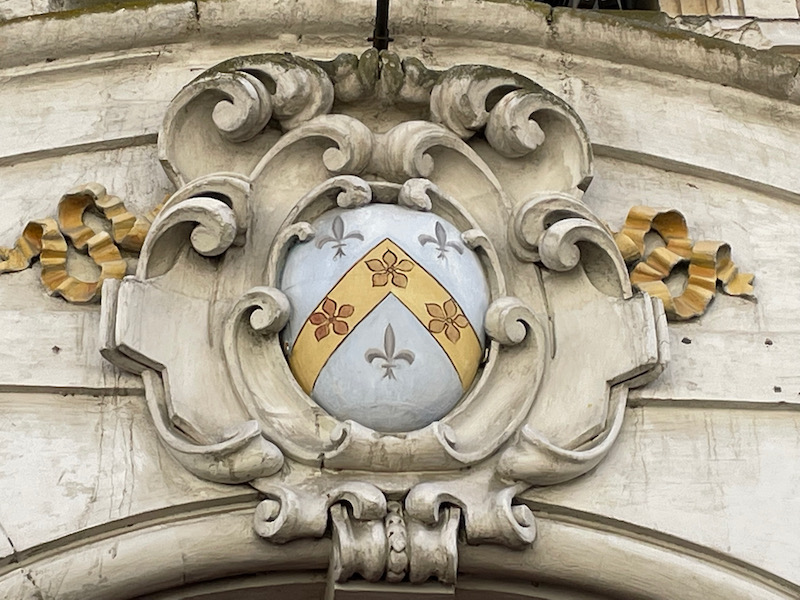
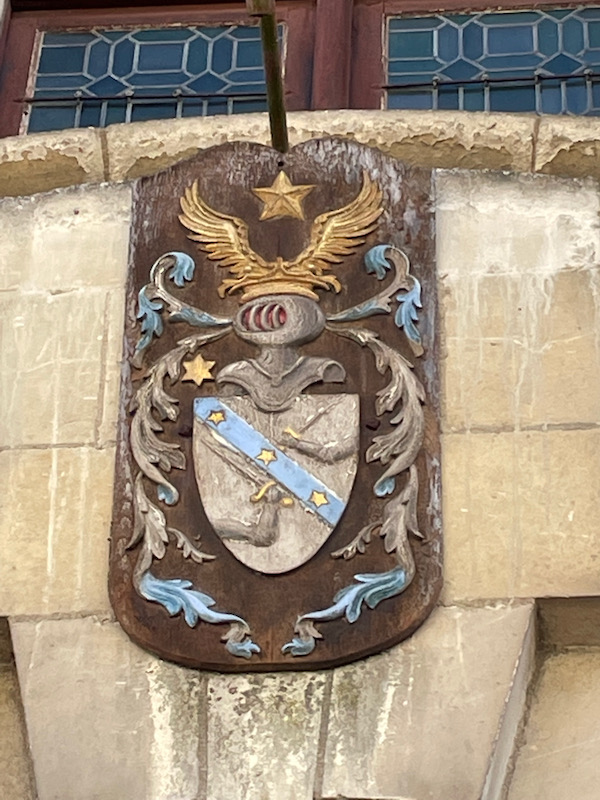
The main feature of the town was the Cardinal's castle, which was built outside of the walls. The castle was sold in 1805 to a gentleman who disassembled it and sold off everything in pieces. But here we have the entrance of where it used to be, which is now a city park, along with a statue of the Cardinal.
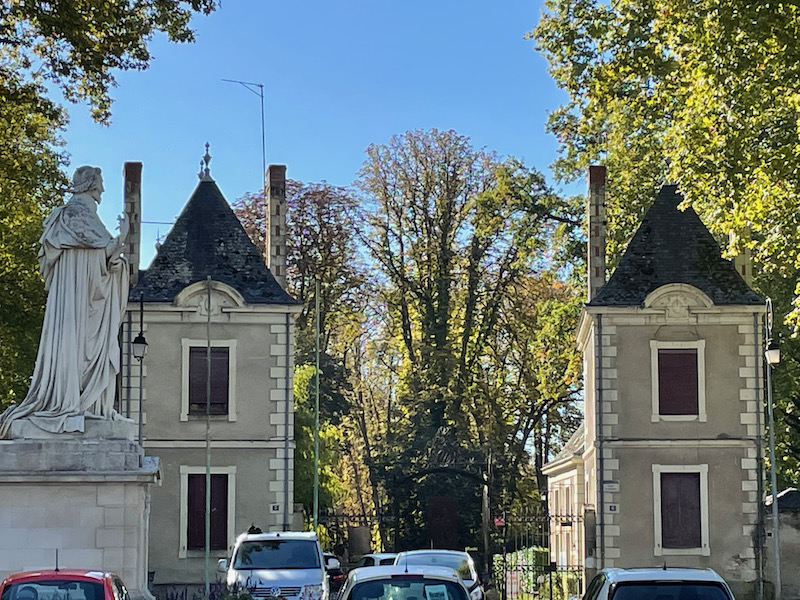
The town was built fully enclosed in a wall with gates and a moat, even though none of that was defensive (not really needed by the 17th century). This is Porte de Chinon, which to me was the nicest looking from the outside, and also gave a view of the walls and moat (that seemed to be only grass now). One of the other sides that we went by, there are houses built up against the wall and so, it doesn't have the same ambiance.
